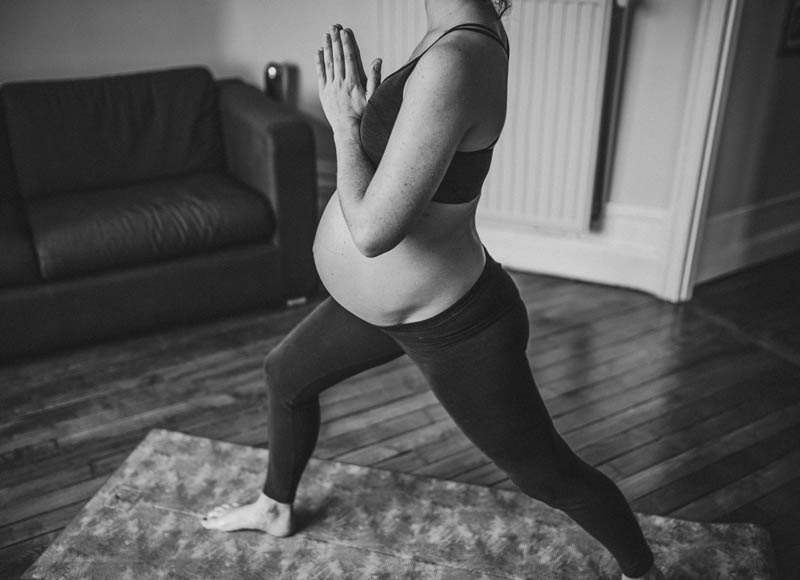Take some time for yourself, stay in shape, continue to play your favorite sport, relax: contrary to what you might think, sports are often the best ally of pregnant women. However, among the hundreds of questions that arise during pregnancy, there are always some types of physical activity that can be practiced during these nine months. Take note with this little summary of the do’s and don’ts of exercise during pregnancy.
Let’s start with a valuable rule for many aspects of the life of a pregnant woman: before each choice, ask the opinion of your doctor. It is the best place for you to get help for adapting your workouts to your pregnancy. Then, follow some basic rules for exercising in a safe manner for both you and your baby.
Sports and activities to avoid when you’re pregnant
In the list of things to not do while pregnant, let’s start with: starting with intense physical activity. Moreover, while pregnant, forget about gaining muscle mass.The idea is to maintain the muscle mass that you have already acquired, move enough to circulate the energy, stay toned and keep a mind of steel.
For cardio, don’t force it. As soon as you start to feel out of breath when you go up the stairs, for example, slow down on running or any other endurance activity. Because if you lack oxygen, your baby will lack it, too. While this is not a problem on an if it happens occasionally, excessive shortness of breath may, in the long run, stunt baby’s growth and health.
Unless you have a medical contraindication and while trying not to raise your heart rate too much, a jogger can continue to run. However, beginning in the first months of your pregnancy, it is better, in general, to avoid impact sports. For example, you should refrain from playing tennis, basketball, or volleyball. And forget about horseback riding, skiing, and cycling, because these activities allow the risk of falling.
The gym and abs: yes, but not all types
Do you practice Pilates or another form of gymnastics or bodybuilding? Continue your training, but warn your coach as soon as possible. If you practice alone, take a few precautions: as soon as your find out that you’re pregnant, stop doing the exercises which would form a “six-pack.” These muscles must expand to leave room for the uterus, and if you exercise them when you’re pregnant, you risk having them develop asymmetrically. The risk after delivery is a diastasis, when the abs do not re-solidarize and the belly can remain prominent, creating discomfort and potentially, pain. Sit-up exercises, which push on the lower abdomen, are in all cases to be avoided during and after pregnancy. In general, these exercises are now considered dangerous and ineffective at all periods of life …
However, don’t hesitate to work your obliques and the transverse muscle. Toning helps with pushing on the day of your delivery and allows less relaxation of the belly after pregnancy. Another important rule: unless otherwise advised by your doctor, always be sure to contract the perineum while exercising.
Yoga: without forcing and under control
Before, during and after your pregnancy, yoga has innumerable benefits that can help even at the beginning of your pregnancy. Regularly doing adapted positions is ideal for breathing, relaxing, gently working deep muscles, getting rid of lumbar pains… Two recommendations however: on the one hand, during the pregnancy, practice with a teacher who will guide you on the positions to do and not to do. If you do not have a yoga class for pregnant women near you, use a guide (written or video) adapted to your condition. On the other hand, do not try to relax: during pregnancy, the production of hormones including relaxin (secreted to relax the pelvis and promote the passage of the baby) make the ligaments and joints more flexible. Forcing on flexibility creates a high risk of injury, and the discomfort may persist after the delivery.
For videos, les Louves particularly likes the high-quality ones from Casayoga.tv and the free ones from Lucile Woodward on Youtube.
In bookstores, you can choose, with your eyes closed, Le Yoga de la femme enceinte, by Christine Colonna-Césari, to the editions Médicis.
The best physical activity during pregnancy: swimming
Don’t forget: swimming is the sport most frequently recommended to pregnant women. It’s the ideal sport during pregnancy because it doesn’t have cardiovascular risks and it eliminates all risk of injury to the joints. Swimming for 45 minutes 2 to 3 times a week can gently strengthen the back, work of the abs, improve blood circulation and reduce some pregnancy problems such as edema and lower back pain.
Water also has the ability to rebalance energies and relieve stress and anxieties related to childbirth. For optimal workouts, alternate the types of swimming (breaststroke, crawl and, if you are used to it, backstroke). Note that the butterfly, because it is more physical, is not ideal. Particularly helpful during the last trimester, swimming helps mothers-to-be to lighten the feeling of heaviness. It is important to relax the body and mind during this intense and special period …
Photo credit : BellyBalloonPhotography/LesLouves
Translation : Ashley Griffin

